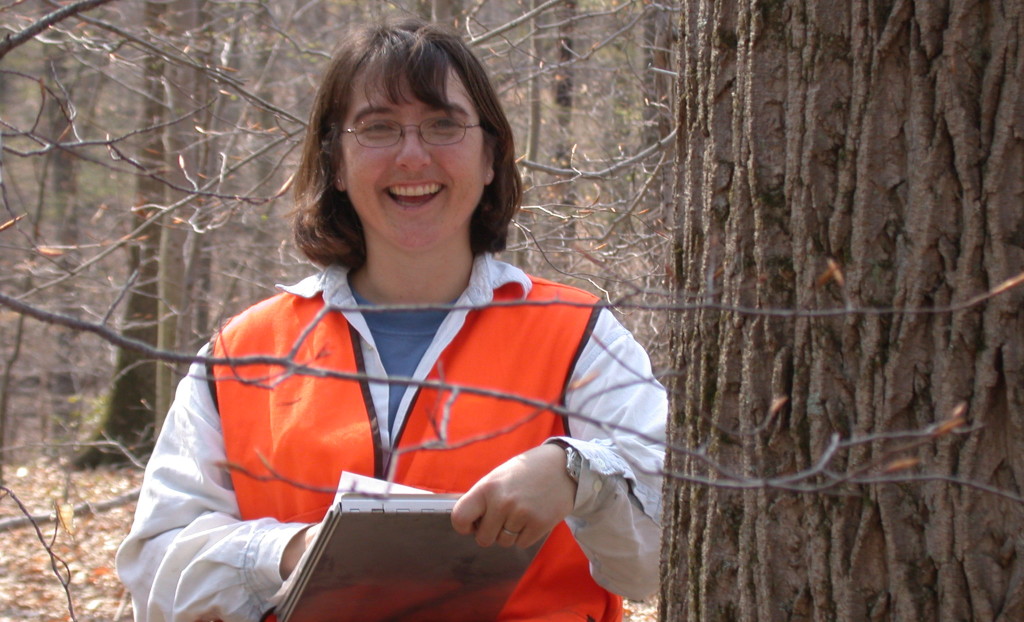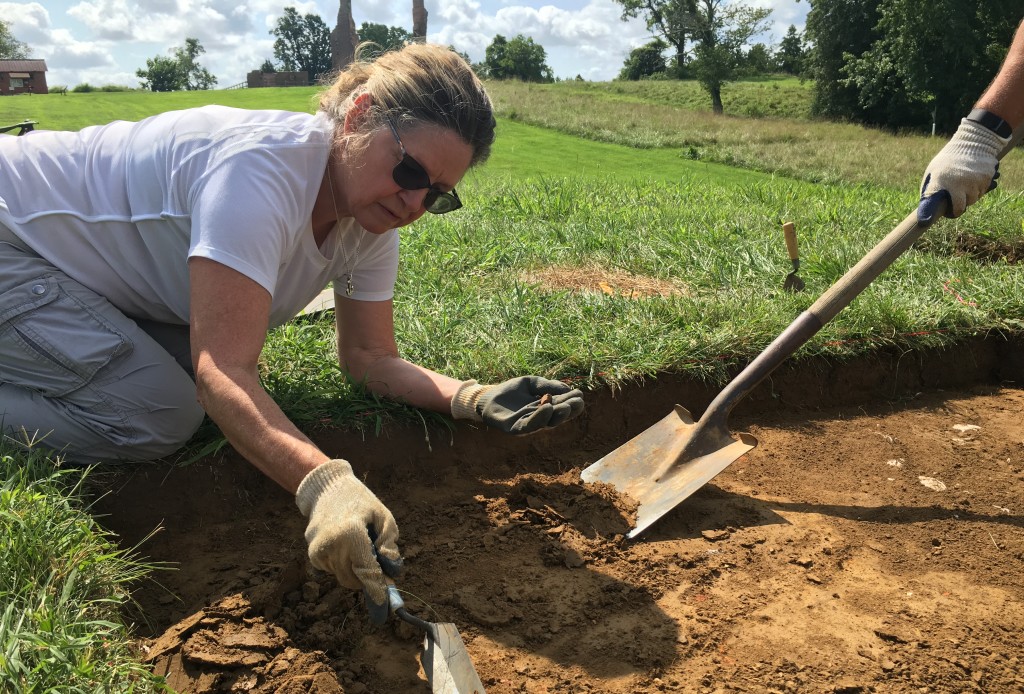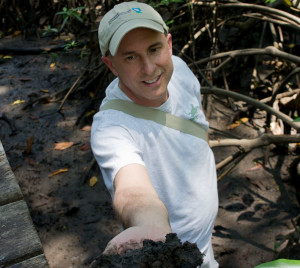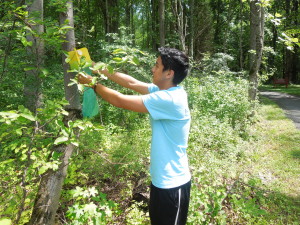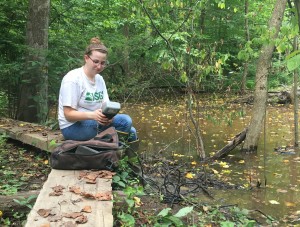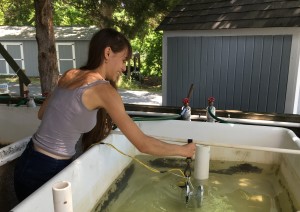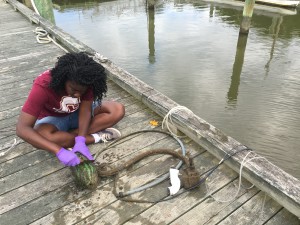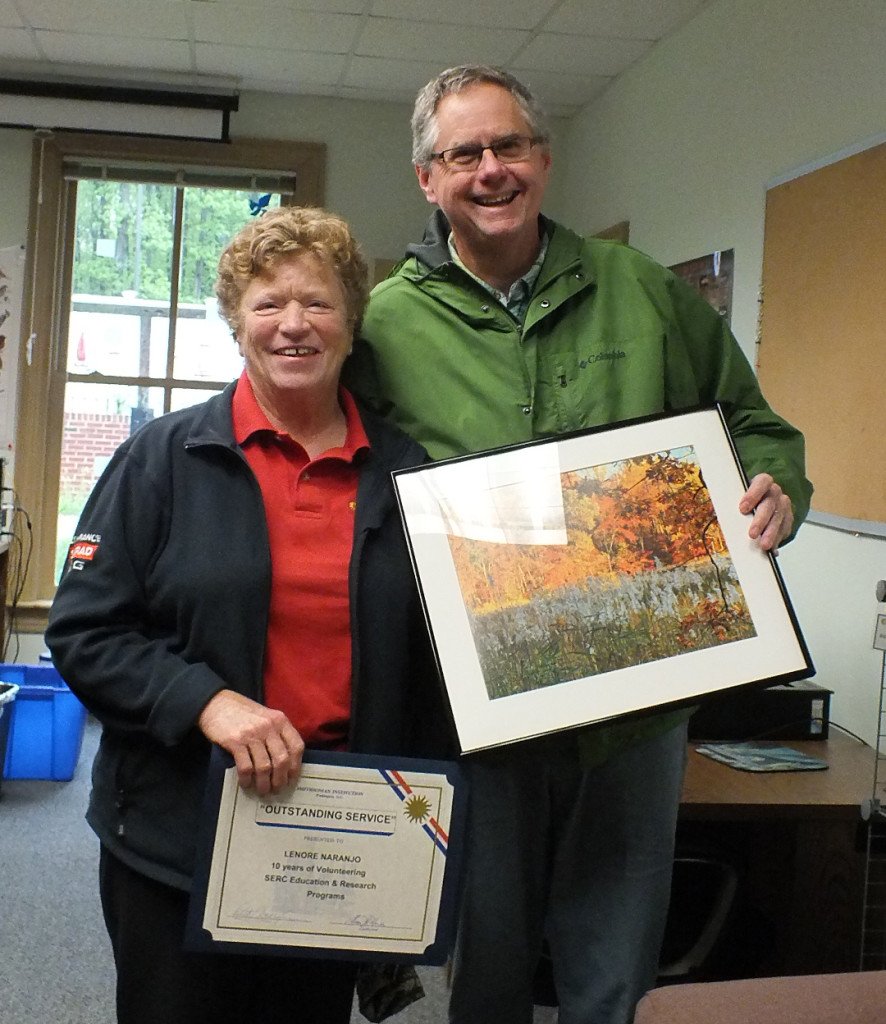
Lenore Naranjo celebrates 10 years of volunteer, with SERC volunteer coordinator Dan Gustafson. (SERC)
by Sara Richmond, communications volunteer
In 2016, nearly 5,000 students and other visitors learned about the Chesapeake Bay ecosystem firsthand through education programs at the Smithsonian Environmental Research Center (SERC). They ventured on hikes and canoe trips, hauled in fish and invertebrates with seining nets, and studied the anatomy of blue crabs. SERC’s education programs are possible through the help of dozens of volunteers who lead field trips and assist behind the scenes. In the coming months, we’ll highlight the work of some of these volunteers in the SERC newsletter and on our blog.
Lenore Naranjo has been volunteering with SERC for over 13 years. After starting as a volunteer in SERC’s canopy labs, she began working with the education program, leading field study groups that give children a hands-on approach to a variety of marine habitats.
“We set up baskets with oysters, and they stay sitting on the bottom of the river through spring, summer, and fall, where they act as a habitat for fish and small critters,” she explains. During field trips, she pulls the baskets from the river bed and sets them in a tray of water so children can explore the baskets’ contents. “Some kids are very hesitant and don’t want to put their hands in something unfamiliar. But then they watch their friends who aren’t hesitant, and the next thing you know, they’re in there too, pulling out fish and crabs.”
Click to continue »




